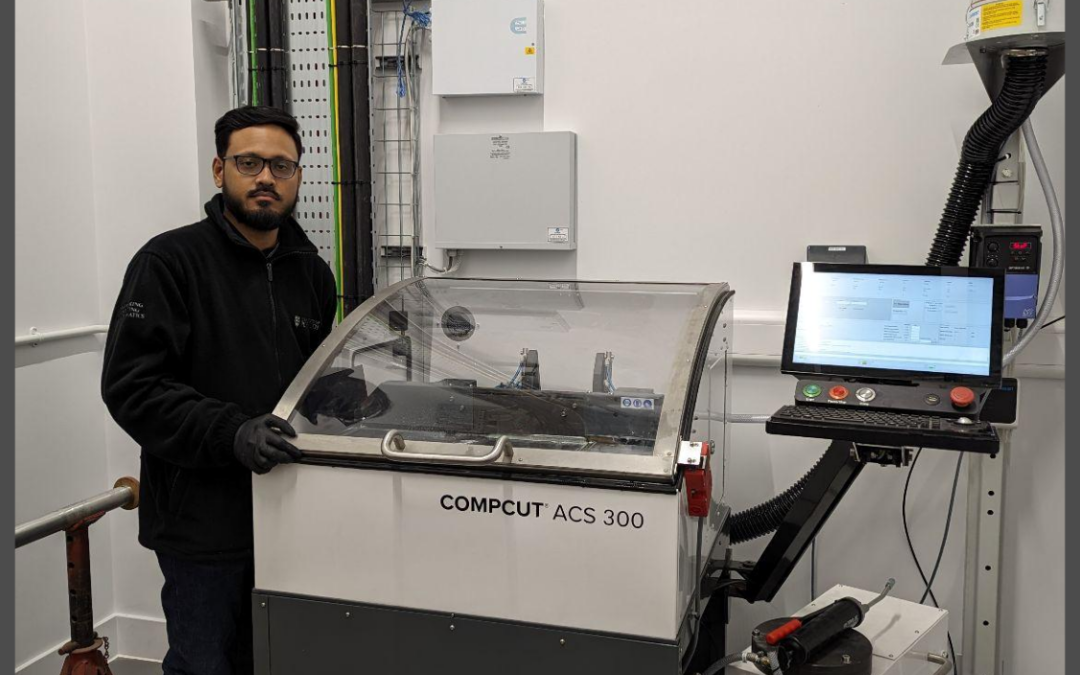Sharp & Tappin delivered one of its COMPCUT ACS 300 saws to the University of Plymouth in late February. This machine is now in use at their new state-of-the-art Composites Centre, enabling the quick and easy production of composite test coupons for innovative research and development projects.
Dedicated to teaching and research, the university’s new Babbage Building encompasses a range of disciplines, including science, technology, engineering, arts, and mathematics. It supports and fosters academic collaboration and innovation. Situated on the western edge of the university’s city-centre campus, this new facility significantly enhances their teaching capacity and research capability.
This new composites lab is a game-changer for the engineering team at the university, providing a state-of-the-art resource for a wide variety of composites-related research and development projects.
When asked why the COMPCUT ACS 300 was chosen for the new facility, Dr. Indraneel Chowdhury, the Senior Technician, explained: “In the past, we had to make do with older and sometimes inferior composite cutting solutions that often suffered from variations in cutting results. The COMPCUT stood out for its fully enclosed design, ease of use, and highly accurate results. Additionally, the machine is very environmentally friendly, with its 100% coolant recycling system, aligning with our environmental policies. Plus, it stood out as the type of machine we would expect in a high-quality academic research centre.”
With enhanced safety and for students and staff in mind, the COMPCUT saw has also been supplied with a factory-fitted coolant mist removal system, adding another layer of enhanced safety for the university’s operators, by quickly removing any cutting mist or particulates from the air during the cutting operation.
Dr. Chowdhury added, “The COMPCUT has already displayed a positive impact on our composite test coupon production, helping to streamline the process and making it much safer, quicker and easier. Plus this machine has given us the level of accuracy we expect.”

